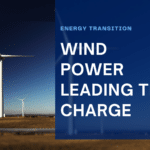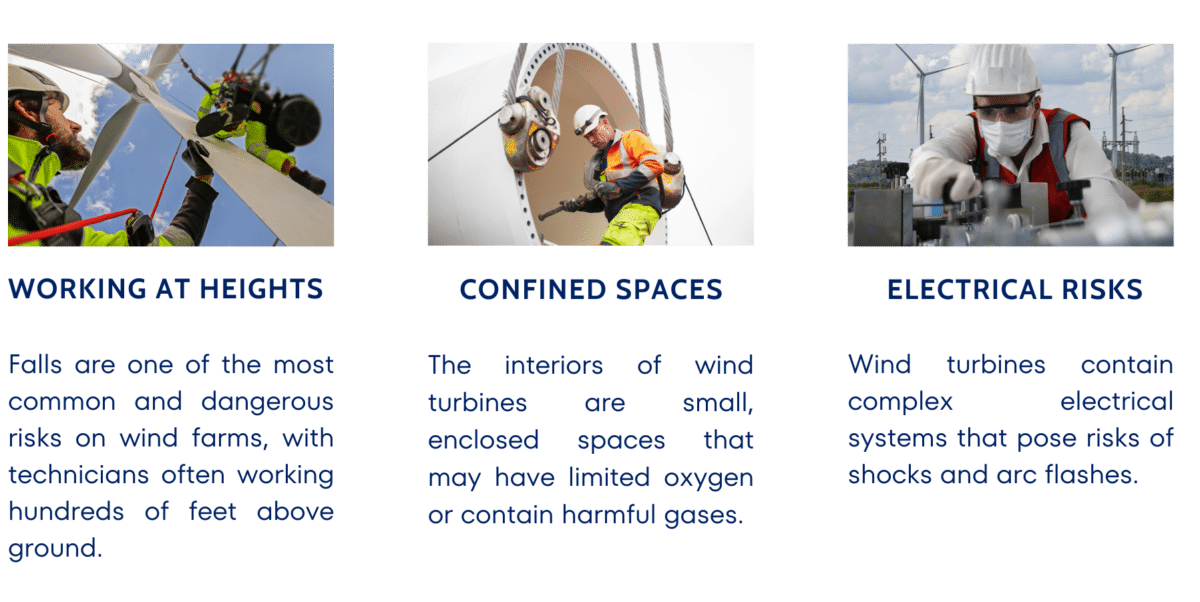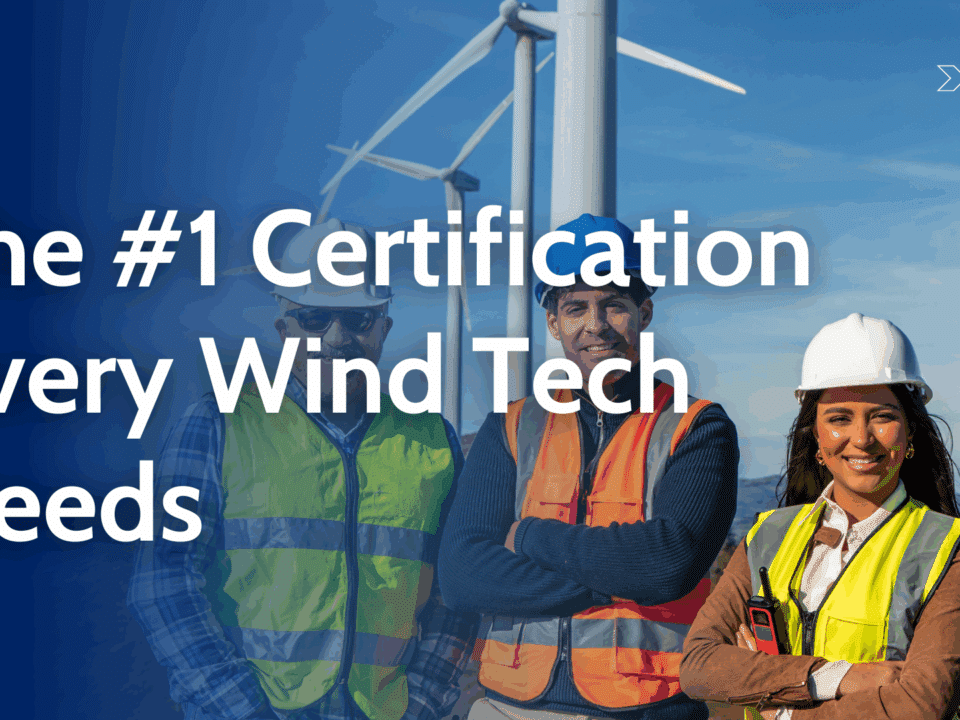
Wind Power: Driving the Global Energy Transition
January 1, 2025
Mastering Wind Energy Mechanics: Essential Training
March 6, 2025As the wind energy industry grows, its potential to transform the world’s energy landscape is undeniable. However, with this growth comes a responsibility to prioritize safety for the dedicated workers maintaining these turbines. From extreme heights to intricate electrical systems, the risks are significant, but they can be mitigated with proper precautions. This February, we’re shining a light on wind farm safety, helping teams prevent accidents and ensure smooth operations.
Common Hazards and How to Avoid Them
Working at Heights
- Hazard: Falls are one of the most common and dangerous risks on wind farms, with technicians often working hundreds of feet above ground.
- Prevention:
- Use certified fall arrest systems, including harnesses, lanyards, and anchor points.
- Regularly inspect safety gear to ensure it meets industry standards.
- Complete training programs that emphasize safe practices when working at height, such as proper ladder usage and rescue techniques.
Electrical Risks
- Hazard: Wind turbines contain complex electrical systems that pose risks of shocks and arc flashes.
- Prevention:
- Follow strict lockout/tagout (LOTO) procedures to de-energize systems before maintenance begins.
- Use insulated gloves, boots, and tools to reduce exposure to electrical currents.
- Stay updated on electrical safety certifications and best practices, ensuring all work aligns with industry standards.
Confined Spaces
- Hazard: The interiors of wind turbines are small, enclosed spaces that may have limited oxygen or contain harmful gases.
- Prevention:
- Use portable ventilation systems to maintain airflow.
- Carry gas detectors to monitor oxygen levels and detect hazardous gases.
- Always follow the buddy system to ensure immediate assistance in case of emergencies.

Essential Safety Tips for Wind Farm Technicians
- Gear Up for Success: Personal protective equipment (PPE) is essential for wind farm work. Helmets, harnesses, gloves, safety glasses, and steel-toe boots provide the first layer of protection.
- Inspect Before You Act: Before starting any task, inspect tools, turbines, and safety equipment for damage or wear. Spotting potential problems early can prevent accidents and delays.
- Stay Educated: The wind energy industry evolves rapidly, and safety protocols must keep pace. Attend regular safety briefings, enroll in refresher training programs, and review updated safety guidelines to stay ahead.
Latest Safety Regulations and Best Practices
Training Standards
Organizations like the Global Wind Organisation (GWO) set safety benchmarks for wind farm technicians. GWO’s Basic Safety Training (BST) certification includes modules on working at heights, first aid, fire awareness, and manual handling—essential skills for all wind farm personnel.
Emergency Preparedness
Preparation is key to managing emergencies effectively. Regularly conduct drills for fire safety, medical emergencies, and evacuation protocols. Ensure that every team member knows their role in these scenarios.
Environmental Awareness
Weather is a significant factor in wind farm safety. High winds, icy conditions, and lightning can create hazardous working conditions. Monitor weather forecasts and postpone work during unsafe conditions.

Building a Safety Culture
Creating a safety-first mindset requires more than just following regulations; it demands a shift in workplace culture. Encouraging open communication about hazards, celebrating safety milestones, and reinforcing training will help ensure everyone takes safety seriously.
Conclusion
Safety isn’t just a box to check—it’s the foundation for success in the wind energy industry. By addressing hazards, adhering to best practices, and staying informed about regulations, technicians can perform their duties with confidence. As we focus on wind farm safety this February, let’s emphasize the value of creating a culture where safety is always the top priority. Together, we can ensure that wind farms remain a sustainable and secure energy source for generations to come.




